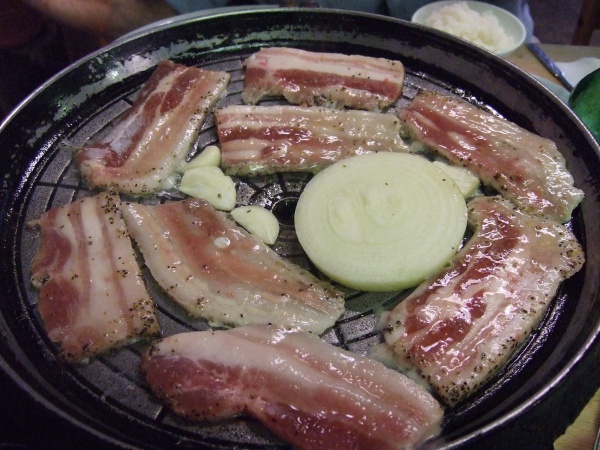Facts About Samgyeopsal
Samgyeopsal, also known as samgyeopsal-gui or grilled pork belly, is a cherished mainstay of Korean cuisine. The term "samgyeopsal" translates to "three-layer flesh" in Korean, emphasizing the distinctive layers of lean meat and fat in pork belly that create a three-striped appearance when sliced. In Korea, samgyeopsal typically refers to grilled pork belly, in the same way "galbi" denotes grilled beef ribs. The word "gui" is used in Korean cuisine to describe roasted, baked, or grilled dishes.
Preparing samgyeopsal is an engaging and social experience. Thick slices of pork belly, sometimes with the skin intact, are grilled on a slanted metal griddle or gridiron directly at the diners' table. Diners usually grill the meat themselves and consume it directly from the grill. Traditionally, the meat is not marinated or seasoned, although marinated versions have gained popularity in recent years.
Samgyeopsal is usually accompanied by a variety of side dishes, including ssam vegetables like lettuce and perilla leaves, dipping sauces such as ssamjang, and various jangajji (pickled vegetables in soy sauce).
Eating samgyeopsal is a hands-on affair. You place the grilled pork belly on a vegetable leaf, add ssamjang and other accompaniments, roll it up, and eat the whole wrap, known as a ssam, in one bite. It pairs well with cooked rice, stews, cold noodles, and beverages like soju or somaek (a blend of soju and beer).
In South Korea, March 3rd is celebrated as "Samgyeopsal Day" honoring the dish's distinctive three-layered composition.

 North Korea
North Korea